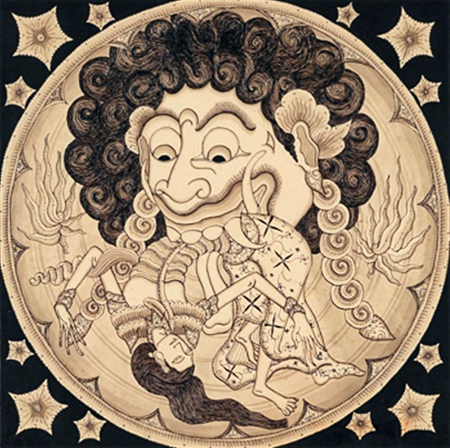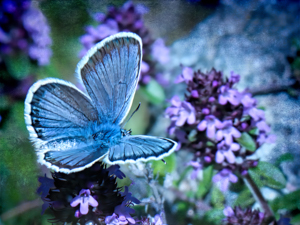
The scriptures utilize many stories and metaphors to coax the mind towards an understanding of Brahman – after all, this is one of the few ways this can be done since Brahman cannot be described. One that is rarely encountered is the myth of rAhu.
According to Monier-Williams (Ref. 179), the word ‘rAhu’ means ‘the Seizer’. It refers to a story in the Hindu purana-s (sacred books of mythology and cosmology), although the myth also occurs in much older Buddhist texts. The fable has the gods ‘churning’ the ocean in order to extract the ‘nectar of immortality’ (amRRita). One of the demons who are watching this, disguises himself, steals a portion and drinks it, thereby becoming immortal too. The sun and moon gods witnessed this and told Vishnu, who subsequently cut off the demon’s head. The head became known as rAhu and the rest of the body (with the tail of a dragon) as ketu. They were then evicted from the earth, from where rAhu continually tries to wreak revenge on the sun and moon by eating (‘seizing’) them. We see these attempts when eclipses take place. Continue reading


